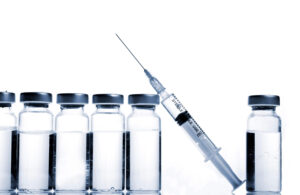Skin Treatments: Microdermabrasion vs Chemical Peels
Choosing the right treatment for skin resurfacing can be a daunting task. The term resurfacing is used to describe a wide range of skin treatments, like microdermabrasion and chemical peels, that treat the damaged outer layers of the skin to reduce wrinkles, spots, blotchiness, red veins, lesions, and scarring. If you’ve been considering either of these treatments, there are several things you should know.
Microdermabrasion is a non-invasive procedure that gently removes the surface layer of the skin to encourage more rapid skin turnover and collagen stimulation. It uses a wand or crystals combined with suction to remove the layer of dead skin cells that are lying on top of your skin. It is gentle enough that it can be used every week or two. The procedure is often done before a facial to helps to remove dead skin while boosting the penetrating effects of the facial products. Since there is no peeling, or downtime, involved with this type of treatment, it can be used a few hours prior to a special engagement.
A chemical peel uses the application of glycolic acid, derived from sugar cane, to remove the surface layer of the skin by breaking down the outer layer so it peels off to leave new, fresher skin showing. Most chemical peels, which can vary in strength, can only be done once a month and will require some down time indoors while your skin is peeling off. It can take up to a week before the whole process is complete, so plan accordingly. Despite the name, you do not have to peel in order to have a good result from a chemical peel. For many the peeling/flaking is more subtle. However, it does offer more noticeable results in the end.
 While both are exfoliating treatments, a chemical peel infiltrates the pores which can allow moisturizers to sink in easier. However, microdermabrasion will stimulate the production of collagen and elastin in your skin making it look more vibrant and alive after treatment. It will take a few weeks for the skin to produce the collagen and elastin so the effects may not be overly noticeable after the first treatment or two. Many people combine use of both micordermabrasion and chemicals peels for maximum results, but you do want to space these out and not use them the same week. It’s best to space them at least two weeks apart.
While both are exfoliating treatments, a chemical peel infiltrates the pores which can allow moisturizers to sink in easier. However, microdermabrasion will stimulate the production of collagen and elastin in your skin making it look more vibrant and alive after treatment. It will take a few weeks for the skin to produce the collagen and elastin so the effects may not be overly noticeable after the first treatment or two. Many people combine use of both micordermabrasion and chemicals peels for maximum results, but you do want to space these out and not use them the same week. It’s best to space them at least two weeks apart.
Microdermabrasion only affects the outermost layer of the skin, therefore side effects resulting from treatment are usually mild. Some common reactions include redness, skin irritation and tightness. Most of these side effects are temporary and should disappear after a few days. Some side effects may occur with high concentrations of glycolic acid. The most common side effects include scabbing and leaving traces of dark brown spots. Redness, skin inflammation and itchiness or irritation may also occur. Also, the skin can become more prone to damage from the sun, so a quality moisturizer with adequate sunscreen is mandatory. Microdermabrasion is the safest alternative if you have mild skin and are unsure if getting a chemical peel is right for you.
Generally, chemical peels are more expensive than microdermabrasion. For maximum effectiveness, six to 12 sessions of microdermabrasion should be completed. Chemical peels vary greatly in price based on the level of treatment selected. Both the mild and medium treatments require several treatments, while the deep peel is done just once in a lifetime. Davis Dermatology offers both skin care treatment for your benefit. Contact us today with any questions or to schedule these or any other procedure.
3 Non-Surgical Treatments to Lift, Firm and Contour Your Neck
Sagging skin, creases and wrinkles in the neck and chin area are some of the most common age-related cosmetic concerns among both women and men. Fortunately, there are several non-surgical neck contouring and double chin treatment options that don’t require extensive downtime.
Continue Reading 3 Non-Surgical Treatments to Lift, Firm and Contour Your Neck
7 SIGNS IT’S TIME TO SEE A COSMETIC DERMATOLOGIST [Infographic]
How do you know when it’s time to see a cosmetic dermatologist?
Continue Reading 7 SIGNS IT’S TIME TO SEE A COSMETIC DERMATOLOGIST [Infographic]
BOTOX® for Migraines and Sweating
While best known for its ability to reduce wrinkles, BOTOX® is used for more than just cosmetic purposes. BOTOX is also FDA-approved to treat migraines and excessive underarm sweating.
So, how does BOTOX work for chronic migraines and sweating? What can you expect during a therapeutic BOTOX appointment? Keep reading…









